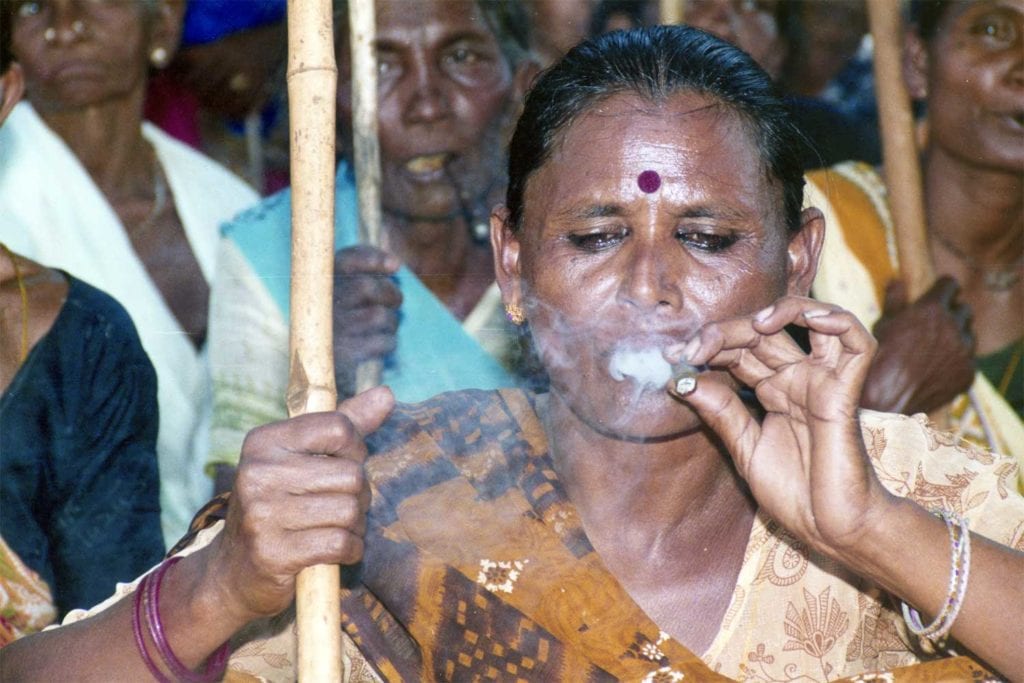India’s crackdown on its dangerous smokeless tobaccos in the wake of Covid-19 should be complemented by a more coherent harm reduction strategy.
By Stefanie Rossel
The Covid-19 pandemic presented an opportunity for India to intensify its fight against the consumption of local smokeless tobaccos. On April 15, 2020, the government banned the sale of tobacco products, including chewing tobacco, the most widely used form of tobacco in India, as a measure to slow the spread of the coronavirus. Chewing smokeless tobacco products, which in India typically contain areca (betel) nut, increase the production of saliva and create a strong urge to spit—an undesirable habit during a pandemic.
As in Sweden, smokeless tobacco is significantly more popular than combustible tobacco in India. According to a 2020 analysis, nearly 199.4 million Indian adults consume smokeless tobacco regularly, which is more than twice the number of smokers. This makes it the country with the largest number of smokeless tobacco users. However, unlike Sweden’s snus, which ranks at the bottom of the continuum of risk, Indian smokeless tobaccos are quite risky. Public health experts describe them as “uniquely deadly.”
There is a wide variety of chewing tobacco available in India. The most commonly used products are khaini, a mixture of tobacco and lime used by 11.2 percent of adults, and gutkha, which consists of tobacco, slaked lime, paraffin wax, catechu (an extract of acacia trees) and crushed areca (betel) nut, and is consumed by 6.8 percent adults. Other smokeless tobaccos use mixtures of betel quid and paan masala.
What all these types of tobacco have in common is that they are highly addictive and full of carcinogens. In addition to the typical ingredients, these products can be laced with thousands of chemicals. The products are said to have both stimulant and relaxing effects; some are sold as mouth fresheners. Available for a few rupees, they are also affordable for poor people.
The consumption of smokeless tobacco was above the national average of 21.4 percent in 13 Indian states, with prevalence ranging from 23.5 percent in Bihar to 48.5 percent in the Tripura, according to the 2016–2017 Global Adult Tobacco Survey (GATS).
Smokeless tobacco consumption is responsible for India’s high rate of oral cancer. With 141.2 million male users compared to 58.2 million female users, consumption of smokeless tobacco is predominantly a male habit. However, three-fifths of the deaths attributable to smokeless tobacco use occur among women. In contrast to smoking, which is generally considered a taboo for women, smokeless tobacco consumption is more socially acceptable. As smokeless tobacco is deeply entrenched in the region’s culture, it tends to pass from one generation to the next. Children as young as 10 years old have been found to regularly use smokeless tobacco.
Samrat Chowdhery, who leads consumer advocacy for tobacco harm reduction in India and is the past president of the International Network of Nicotine Consumer Organizations, estimates that smokeless tobacco is responsible for 350,000 premature deaths annually in India. “Though this mortality rate is lower than from combustible tobacco, it is still quite high,” he says. “The main reason for this is that Indian/southeastern smokeless tobacco products are handmade or made in poor hygienic conditions, which allows for impurities to creep in. There is no attempt to control or reduce tobacco-specific nitrosamines; the use of slaked lime adds another cancerous component; there is no licensing, standards or quality control; and finally toxic additives, such as nicotine sulphate and flavoring agents, are added to tobacco products.”

















